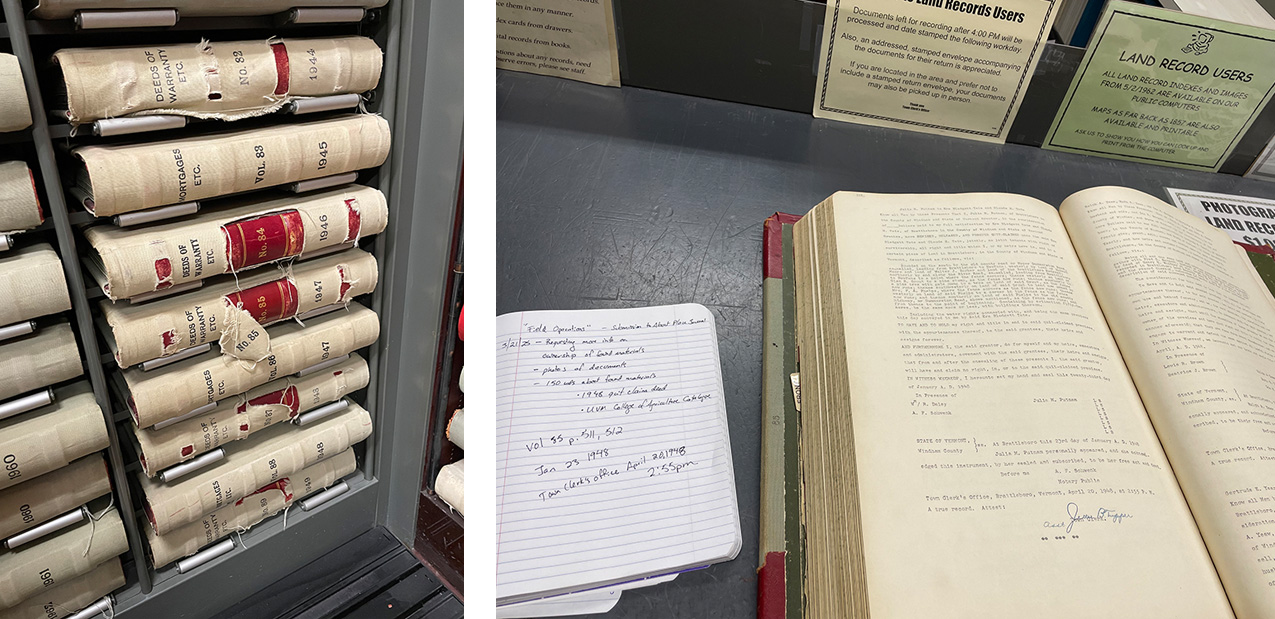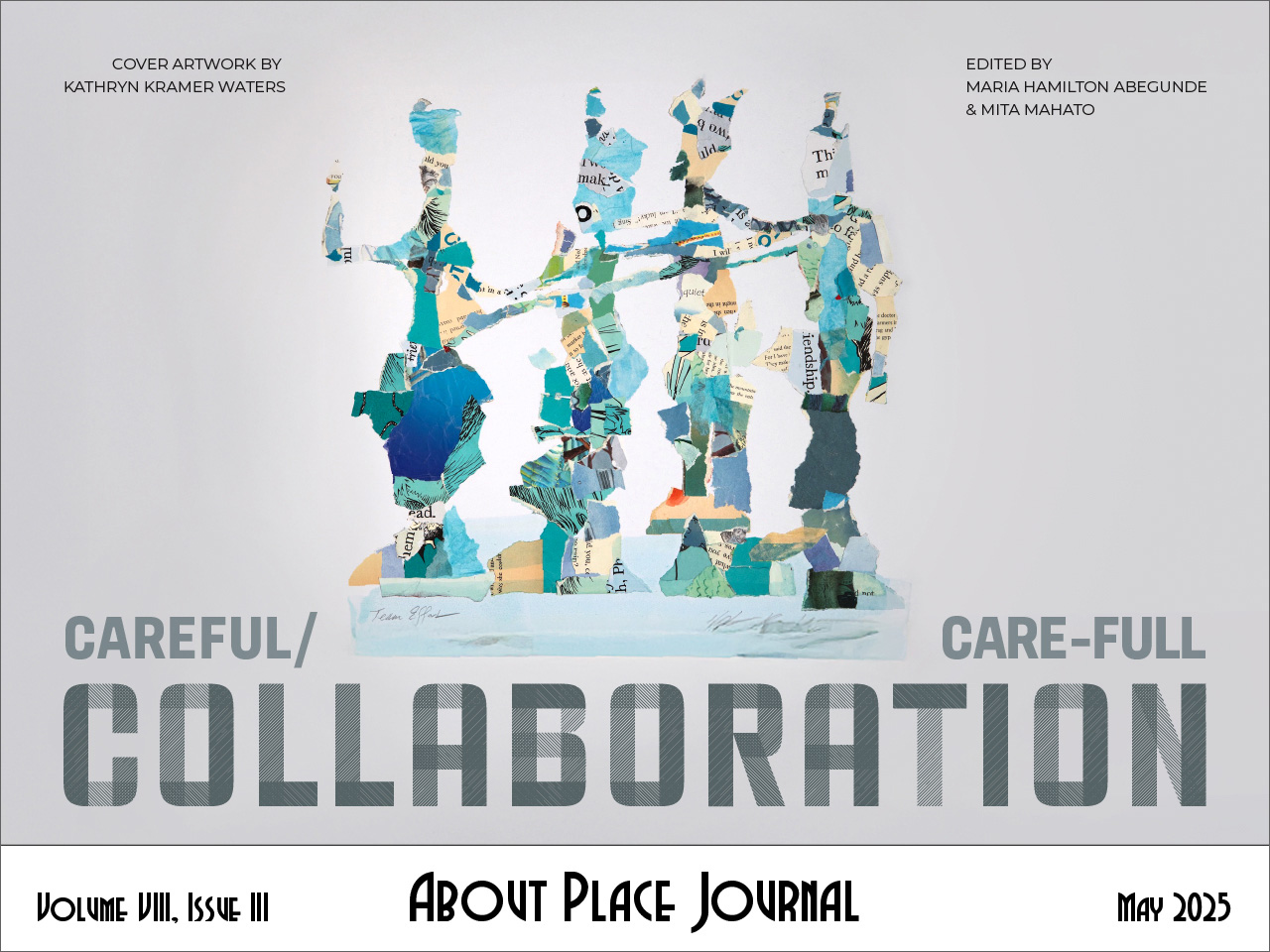Bounded on the south by the old county road,
or Upper Dummerston Road, so-called,
leading from Brattleboro to Newfane;
westerly by land of Hubert Moore
and land of Walter J. Barber
and land of the Brattleboro Retreat;
northerly by and along the River Road, so-called,
leading from Brattleboro to Newfane
to a point where the fence corners;
thence westerly on land of Glen R. Grout
to a pine stump,
as the fence now runs;
thence southerly to a pine tree
with gate hung to a tree on land of said Grout
as the fence now runs;
thence southwesterly on land of said Grout
to land now owned by Mrs. F. A. Phelps,
where the fence corners as the fence now runs;
thence westerly on land of said Phelps
to a corner in the fence
as the fence now runs;
and thence southerly on land of said Phelps
to the old county highway, or Dummerston Road,
above mentioned, as the fence now runs;
and from thence to the point of beginning.
Containing by estimation fifty-two acres,
be the same more or less,
with buildings thereon.
Including the water rights connected with,
and being the same premise
this day conveyed
to me
by said Era Blodgett Tate.
(2023 reflections) I stand in the place
I remember a sand pit, like a beach
a few tufts of coarse grasses
straggling, here and there.
Grass grows up to my armpits now, so thick
it chokes my steps. The barn overflows
with hay. By the end of his life,
Claude reached beyond parsing. His farm had
paid dearly for his education. This he’d learned:
he gave the land.
Before the fence, the chickadees flitted
hemlocks along the stream,
splashing down the ledgy ravine in joyful rush
oaks thrust their taproots deep
Water seeped through soil, ants built busily
moss crept along banks.
The fence runs over what came before,
source that knits land together
mycelium stitching life to life.
This land’s health burrows with the grubs
in the soil, dwells
underground,
a web of creatures it hosts and spreads,
the fox who hunts here, neighbors’ footsteps,
all contributions bank abundance—
provenance from the dream of beginning.
This land grows a rare devotion.
Ravens nest in the pines
mushrooms slow
by the stream, a farmer drives by, speaks
to the team who haul a load of squash
from the field. The lumpy pile, shades of orange
and earth,
soft sound of hooves on the dirt road.
The College of Agriculture
1920-21 Catalogue:
Curricula in Agriculture
It is the aim of this College to impart
to its students
such theoretical
and practical training as will serve
to fit them successfully
to engage in agricultural pursuits,
using that term in the widest sense;
that is to say,
including not only the conduct
of farming operations,
but also that of teaching
or research in agriculture.
While its fundamental concept
is to make agriculture
and subjects cognate
thereunto
the main line of effort,
the course is broad in its scope
and includes mathematics, literature, language,
sciences and other cultural studies.
The technique of the sundry operations
is exemplified,
so far as time,
means and equipment permit,
but the emphasis is laid on lectures, text-books
and laboratory work
somewhat more
than upon field operations.
Haverford College,
Main Line/Haverford, Pennsylvania
Class of 1997:
English Major
For my thesis, I chose
to study a Black woman
anthropologist and author
whose work, translating rural, agricultural
Black culture
into written, published English
in the 1930s, spoke eloquently
to me,
there in academia, where my work
was praised to the skies
whilst I applied it to their
theories.
Following her example
I developed my own logic
writing about
the invisible
woman
who translated the conversation
about the sound a farmer used
to tell his mule to go.
After I studied abroad and took American
Literature classes in a university
in Santiago—
in order to study the culture
that mystified me—I was told
I’d missed my chance
to take Junior and Senior
Seminar in the preferred order.
This set of dyptychs is a collaboration between found poems from documents circumscribing the life of Claude Tate, the predecessor farmer on my family’s farm, with poems of my own experience growing there, claimed by the same land and somehow more loyal to it than to the human institutions that intersected and bound both Claude and myself. The contrasts and common threads intertwine and inform each other, leading to new questions about the power of land to affect human community and vice versa.
I am fascinated with the formality of these found texts, as compared to the intimacy and raw connection I experience on the land and listening to stories told by people who remember Claude. The texts are abstractions much like the institutions and repressions they embody. I enjoy setting their archaic language, which has its own beauty and rhythm, against a more flowing description of sensory experience. Reckoning with the historical ironies—that have had real, earth- and life-shaping implications both for Claude and for my family—in a literary form has been satisfying, even healing. I have been assisted in locating and accessing the found documents by real, breathing human beings, including Jeanne Walsh, Research Librarian at Brooks Memorial Library; Jane Fletcher and Alina Kulpaviciute, Assistant Town Clerks at the Brattleboro Town Clerk’s office; and Rhonda Hayward, Team Support Generalist, UVM Registrar’s Office.
Found materials used in these collaborations:
- 1948 Quit Claim deed, volume 85, page 512, Brattleboro Land Records in the Brattleboro, Vermont Town Clerk’s office (a public record) (pictured below)

- University of Vermont Catalogue, 1920-21, p. 185 (“all works published in the United States before January 1, 1930, are in the public domain”—from Circular 15A of the United States Copyright Office). Assistance in finding this document was provided by Rhonda Hayward, Team Support Generalist, UVM Registrar’s Office.


